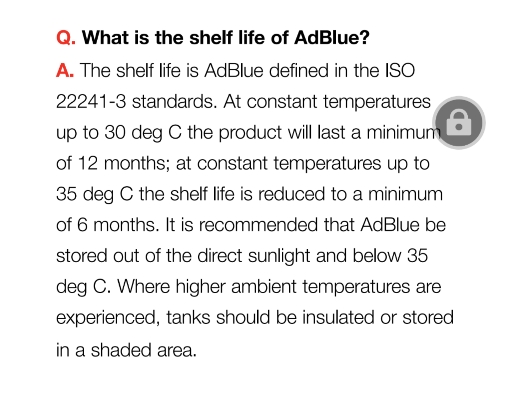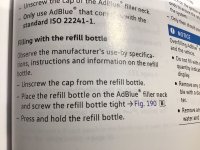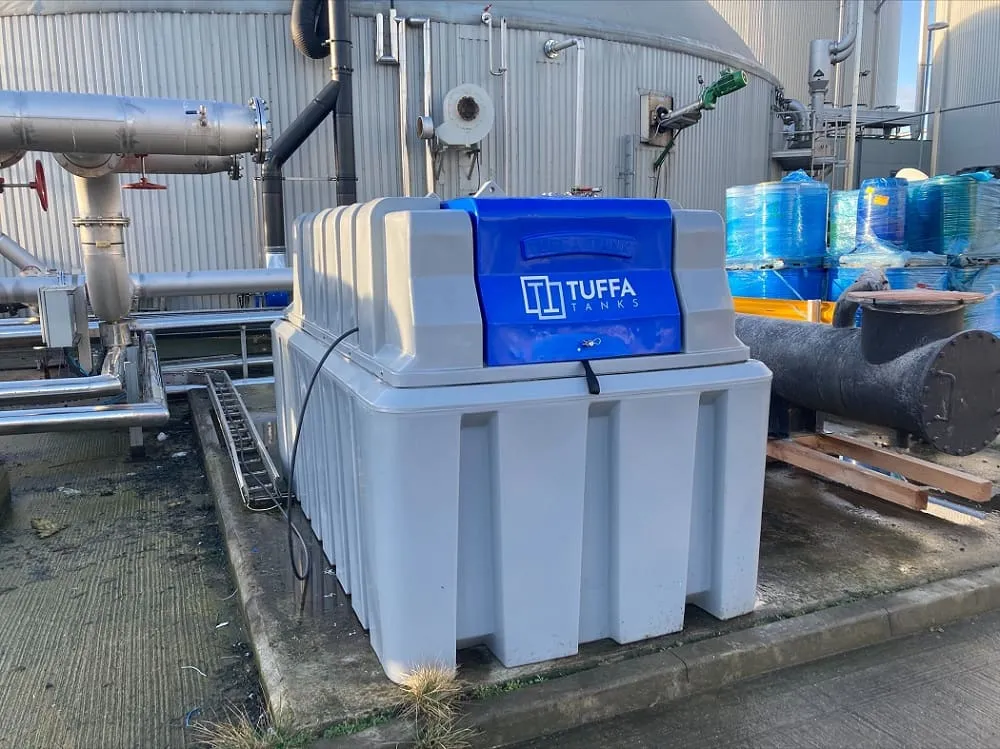Amarillo
Tom
Super Poster
VIP Member
Three years.
Do you have a docket giving you free refills? If you do just siphon out the old and take it to your nearest VW van centre for a full refill.
Three years.
Post # 17 https://vwcaliforniaclub.com/threads/adblue-refill.33725/post-434859 suggests 4 years.Adblue has a 2 year lifespan, is it two years old?

Says on the can use within 12 monthsAdblue has a 2 year lifespan, is it two years old?
And how old is it and how has it been stored when you buy itSays on the can use within 12 months

It crystallises, can’t be good got some in the shed that’s gone offIf it’s gone off, then unless it’s gone lumpy, isn’t emitting more NOx the only downside?
Does the Handbook have any information regarding using Adblue beyond its Best Before date?I just looked in my garage.....I have about 2 litres of Adblue remaining from a 10 litre original translucent container. The Adblue is clear. No crystals. No lumps. No direct sunlight since I bought it and I estimate the max garage temp is about 16 degrees.
The date on the container is 06/06/2017.
That means the Adblue is over three years old but not over 4 years old (Skoda Karoq 1.6TDI Owners Manual stated max age of use - see post 17 above.
Should I use or bin?
(BTW I think crystals only form when the Adblue is in very high concentrate as a result of evaporation. You can see this very often around lorry fill tank caps.)
All I can find is thisDoes the Handbook have any information regarding using Adblue beyond its Best Before date?
All I can find is this which to me feels like a cop out by VW. It is not clear if the 06/06/2017 date on my container is a batch date or a use by date and in any event what is meant by use by date? The date one tops up the van or the date when the Adblue is all used. All rather vague to me.Does the Handbook have any information regarding using Adblue beyond its Best Before date?


I believe AdBlue has a relatively short shelf life so maybe not a good idea to buy large quantities? Obviously depends on the mileage one does.Good ADBLUE deal on EBAY, this supplier has various quantities and short term deals to suit your rate of consumption.
NOTE! you will need to decant it into a can which has a filling spout as these are purely cans/containers.

Mannol AdBlue 3001 Additional Working Fluid for SCR Diesel Engines - 20L (AD3001-20) for sale online | eBay UK
Find many great new & used options and get the best deals for Mannol AdBlue 3001 Additional Working Fluid for SCR Diesel Engines - 20L (AD3001-20) at the best online prices at eBay UK! Free delivery for many products!www.ebay.co.uk

 www.tuffa.co.uk
www.tuffa.co.uk
I also own a Karoq 1.6 TDi when I get an AdBlue warning I just put in the minimum about shown on the display as the AdBlue lasts quite a long time.According to the Skoda Karoq 1.6TDI Owners Manual it states the max age of use to be 4 years.
One temporary emergency roadside top-up process springs to mind, solves two problems in one go .....Anyone remember the Diesel scandal? .... well it was all about AdBlue.
When the legislation came in requiring selective catalytic reduction (SCR) catalysts to reduce (Nitrous Oxide) NOx emissions using AdBlue, the components needed to be fitted to vehicle platforms that were never designed to have them ... this lead to a headache for the vehicle manufacturers.
Packaging an AdBlue tank and dosing system had never been part of the design brief for older vehicle platforms so the manufacturers started looking for places they could put the tanks, and they also needed access to them to refill. Some vehicles ended up with fillers in very obscure places like in the boot under the carpet.
Then came the discussion of buyers attitude to filling AdBlue - it's a urea solution, very similar to pi$$, and some managers in the automotive OEMs balked at the thought of customers being forced to pour a urea solution into a filler inside the car somewhere - with the possibility of spilling in on the upholstery and carpets. They thought it ought to be a service-only item - but service intervals were getting longer and longer.
So you end up with an undersized tank due to space, poor access as it was an afterthought in the design, and an OEM that doesn't want customers spilling urea in their car interiors. The only way out was to ensure that one tank lasted between services, and the only way to do that, and get through the emissions tests, was to use less AdBlue during normal driving, making the tank last longer so it could be filled by technicians as part of a service. To do this they installed a piece of software that recognised an emissions cycle and dosed the car accordingly, the rest of the time it used less AdBlue and created more NOx.
The rest is history as they say.
Filling AdBlue is still seen as a "dirty" job so even though they are properly packaged in more recent vehicles, with better filler access outside the vehicle, the tanks are still large so AdBlue could still be a service item.
The real problem with AdBlue from a user perspective is that when you run out, your engine wont start (the rules) - just like running out of Diesel.
 As I get older, I find I'm topping up more frequently, too ...
As I get older, I find I'm topping up more frequently, too ...Minimum of one year but mainly relates to storage location.I believe AdBlue has a relatively short shelf life so maybe not a good idea to buy large quantities? Obviously depends on the mileage one does.
Minimum of one year but mainly relates to storage location.
Personally wouldn't buy more than a 6 month suppl;y for both storage space and the lifespan.

The VW California Club is the worlds largest resource for all owners and enthusiasts of VW California campervans.

